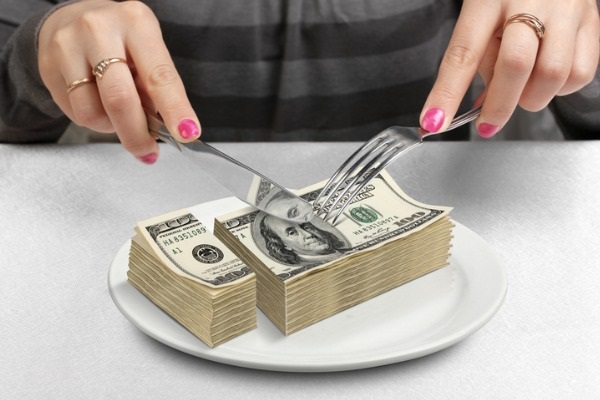Four warning signs a dividend cut is on the cards
We name some of the main warning signs the pros look out for that point to a dividend in danger.
26th October 2021 10:14
by Kyle Caldwell from interactive investor
We name some of the main warning signs the pros look out for that point to a dividend in danger.

Dividends are back, with paymentsrising by almost £40 billion in the third quarter of 2021.
The speed of the dividend recovery has surprised on the upside, leading analyst Link Group to upgrade its forecast for the year. For 2021, headline dividends are forecast at £93.2 billion, an increase of 44.8% year-on-year. Underlying dividends, meanwhile, are forecast to rise by 22.4% to £77.4 billion.
While companies returning to paying dividends having halted payments during the Covid-19 pandemic should be warmly welcomed by investors, the importance of assessing the sustainability of a dividend remains.
Below are some of the main warning signs the pros look out for that point to a dividend in danger.
- Dividends are on the way to recovery, despite many laggards
- Drilling down into the dividend: a new item for the danger list
- The inflation-proof shares fund managers are backing
High Dividend Yield
A high dividend yield looks attractive on paper, but it should be treated with a healthy dose of scepticism.
As share prices and yields have an inverse relationship, a high yield more often than not is a sign that a stock, for whatever reason, is out of favour.
It is therefore crucial to do some digging to check whether the yield on offer is sustainable. One of the first things to look for is the company's track record for paying dividends.
Although a stock that has historically been a generous payer should not be considered a sure bet for dividends continuing to roll in, those businesses that have patchy records or have historically been poor payers should set alarm bells ringing.
Dividend Cover
This is considered a key metric to assess whether a company is in a healthy position to distribute dividends. It is calculated by dividing earnings per share (EPS) by the dividend per share (DPS).
As a rule of thumb, a low dividend cover ratio – around one times or lower – suggests dividends are vulnerable, as the company is using most if not all of its profits to fund the dividend. A figure of two or more is viewed as comfortable because it is a sign the business is not over-distributing.
Those firms that do hand back more cash than they can afford risk damaging their longer-term growth prospects through lack of investment in the business.
Debt levels on the rise
Another warning sign is when the dividend is being funded out of debt. One way private investors can work this out is by looking at the free cash flow measure, which takes into account how much money a company has left over once all business expenses have been made, including interest on borrowings.
Those businesses that pay their dividends without resorting to borrowing will have a positive free cash flow figure.
But bear in mind that a negative score does not always mean the dividend is under threat. If money is borrowed cleverly and efficiently, the business will ultimately become more profitable.
Return on capital employed
While there are many ways to assess the strength of a business, arguably one of the most useful is a measure called 'return on capital employed' (ROCE), which can be calculated from a company's accounts. The ROCE is the profit figure divided by the assets of the businesses.
Warren Buffett is a fan, describing the measure in 1979 as "the primary test of managerial economic performance". ROCE is considered more useful than the more familiar return on equity (ROE) measure, because ROCE also factors in debt and other liabilities.
There's no golden rule that dictates what a good or bad figure is; instead, investors should look at whether the ROCE is rising or falling versus its historical value for that company.
But Terry Smith, manager of the Fundsmith Equity, a member of interactive investor's Super 60 list, does not consider investing in a company unless it can achieve a ROCE of more than 15%.
Divided pledges can be broken
Finally, although a commitment from the management of a company to maintain a future dividend payment should in theory be seen as a positive, the reality is that there have been far too many broken promises over the years for investors to bank on such pledges being kept.
These articles are provided for information purposes only. Occasionally, an opinion about whether to buy or sell a specific investment may be provided by third parties. The content is not intended to be a personal recommendation to buy or sell any financial instrument or product, or to adopt any investment strategy as it is not provided based on an assessment of your investing knowledge and experience, your financial situation or your investment objectives. The value of your investments, and the income derived from them, may go down as well as up. You may not get back all the money that you invest. The investments referred to in this article may not be suitable for all investors, and if in doubt, an investor should seek advice from a qualified investment adviser.
Full performance can be found on the company or index summary page on the interactive investor website. Simply click on the company's or index name highlighted in the article.